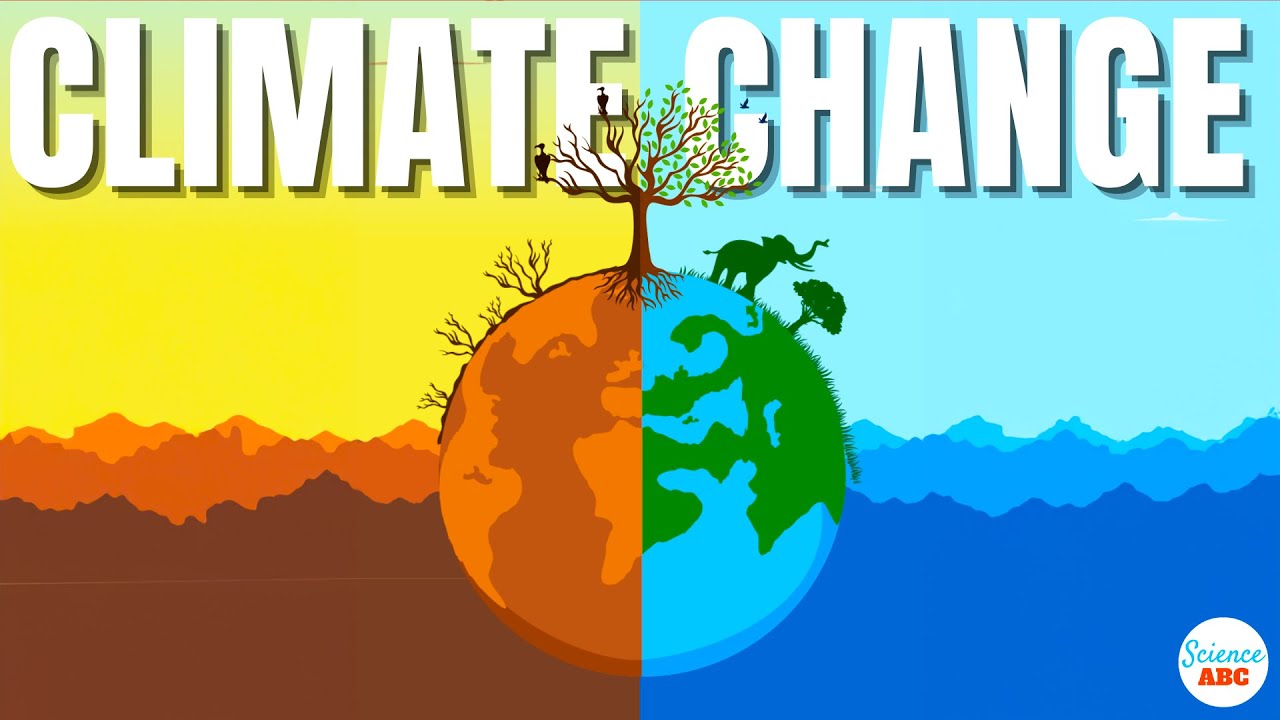Dr Dhaneesh - Projections of global climate change
Summary
TLDRThis session on climate change explores its long-term impacts on temperature, rainfall, and extreme weather events. It highlights how human activities, particularly the burning of fossil fuels, drive greenhouse gas emissions, leading to rising global temperatures and severe environmental consequences. Key issues discussed include the increase in average temperatures, ozone depletion, melting glaciers, rising sea levels, and changing precipitation patterns that can cause flooding or droughts. The session underscores the urgency of addressing climate change to protect vulnerable regions and ecosystems, emphasizing the interconnectedness of environmental challenges.
Takeaways
- 🌍 Climate change refers to long-term alterations in temperature and precipitation patterns, primarily driven by human activities.
- 🌡️ The average global temperature has increased by 0.6°C per decade since 1850, indicating a significant rise in heat.
- 🌱 Human activities, including fossil fuel combustion and deforestation, are the main sources of greenhouse gas emissions.
- 🌬️ Greenhouse gases, such as carbon dioxide and methane, trap heat in the atmosphere, contributing to global warming.
- 🧊 Ozone depletion occurs due to chemicals like CFCs, leading to increased UV radiation and various health issues.
- 🐻 Polar bears are particularly affected by climate change, as melting sea ice limits their hunting grounds and food availability.
- ☔ Climate change can lead to more intense and frequent precipitation, resulting in severe flooding in some areas and droughts in others.
- 🔥 Rising temperatures contribute to prolonged droughts and increased wildfire seasons, posing risks to ecosystems and human safety.
- 🌊 Global sea levels are rising due to the thermal expansion of seawater and melting glaciers, threatening low-lying islands and coastal areas.
- 🏝️ Vulnerable countries, like the Maldives and Tuvalu, face the risk of submersion due to rising sea levels, prompting concerns over population displacement.
Q & A
What is climate change?
-Climate change refers to the average long-term changes in temperature and precipitation patterns on Earth, which include rising temperatures, changes in rainfall, and the effects of warming such as rising sea levels and melting glaciers.
What are greenhouse gases, and why are they significant?
-Greenhouse gases are atmospheric gases that trap heat in the atmosphere, contributing to the greenhouse effect. They include carbon dioxide, methane, and nitrous oxide. Their significance lies in their ability to absorb heat radiating from the Earth's surface, leading to global warming.
What human activities contribute to greenhouse gas emissions?
-Human activities responsible for greenhouse gas emissions include energy production, transportation, agriculture, industry, and land use changes like deforestation.
How does climate change impact temperature?
-According to the 2023 annual climate report, the combined land and ocean temperature has increased at an average rate of 0.6 degrees Celsius per decade since 1850, resulting in significant long-term warming.
What is the difference between global warming and climate change?
-Global warming specifically refers to the rise in global temperatures primarily due to increased greenhouse gases, while climate change encompasses broader changes, including temperature variations, precipitation patterns, and other climate indicators over longer periods.
What is ozone depletion, and what are its consequences?
-Ozone depletion refers to the thinning of the ozone layer caused by substances like chlorofluorocarbons. Consequences include increased UV radiation reaching the Earth's surface, leading to higher rates of skin cancer, cataracts, and other health issues.
How does global warming affect sea levels?
-Global warming causes sea levels to rise primarily due to the melting of glaciers and ice sheets and the thermal expansion of seawater as it warms. This has been observed as a significant rise in sea levels over recent years.
What effects does climate change have on rainfall?
-Climate change affects the intensity and frequency of precipitation. Warmer oceans increase evaporation, leading to more moisture in the atmosphere, which can result in heavier rain and increased flooding in some areas, while other regions may experience droughts.
What are some extreme weather events linked to climate change?
-Extreme weather events linked to climate change include prolonged droughts, intense storms, wildfires, and heavy precipitation leading to flooding, all driven by rising temperatures and changing atmospheric conditions.
Which regions are most at risk from rising sea levels?
-Low-lying areas and small island nations are most at risk from rising sea levels. Countries like the Maldives and Tuvalu may face significant threats of submersion due to their low elevation and vulnerability to flooding and erosion.
Outlines

This section is available to paid users only. Please upgrade to access this part.
Upgrade NowMindmap

This section is available to paid users only. Please upgrade to access this part.
Upgrade NowKeywords

This section is available to paid users only. Please upgrade to access this part.
Upgrade NowHighlights

This section is available to paid users only. Please upgrade to access this part.
Upgrade NowTranscripts

This section is available to paid users only. Please upgrade to access this part.
Upgrade NowBrowse More Related Video

Does Climate Change Cause Extreme Weather?

Climate Change and Global Warming: Explained in Simple Words for Beginners

IPB Podcast: Perubahan Iklim dan Kontribusi Masyarakat dalam Menghadapinya

Gejala Ekstrem Perubahan Iklim

GCSE Chemistry - Global Warming & Climate Change

What's the difference between weather and climate? - BBC News
5.0 / 5 (0 votes)